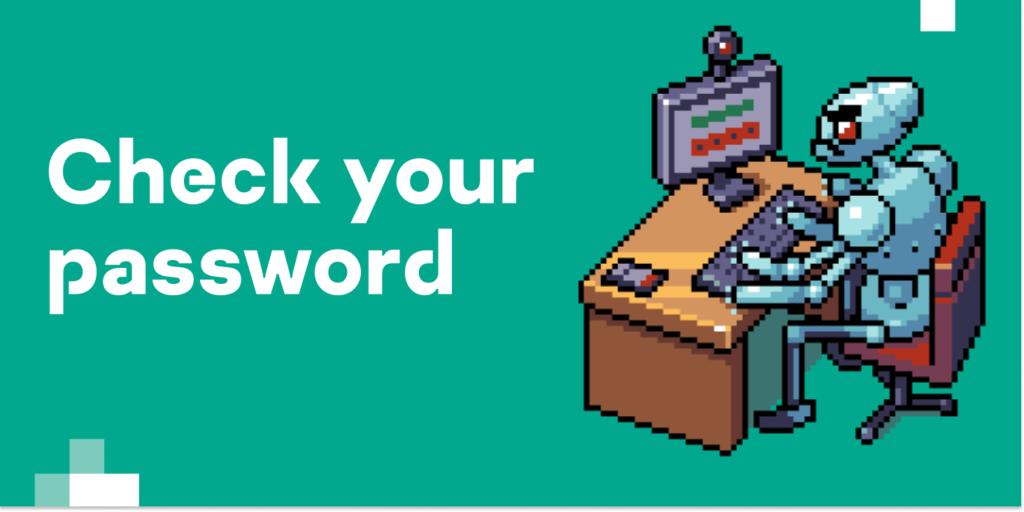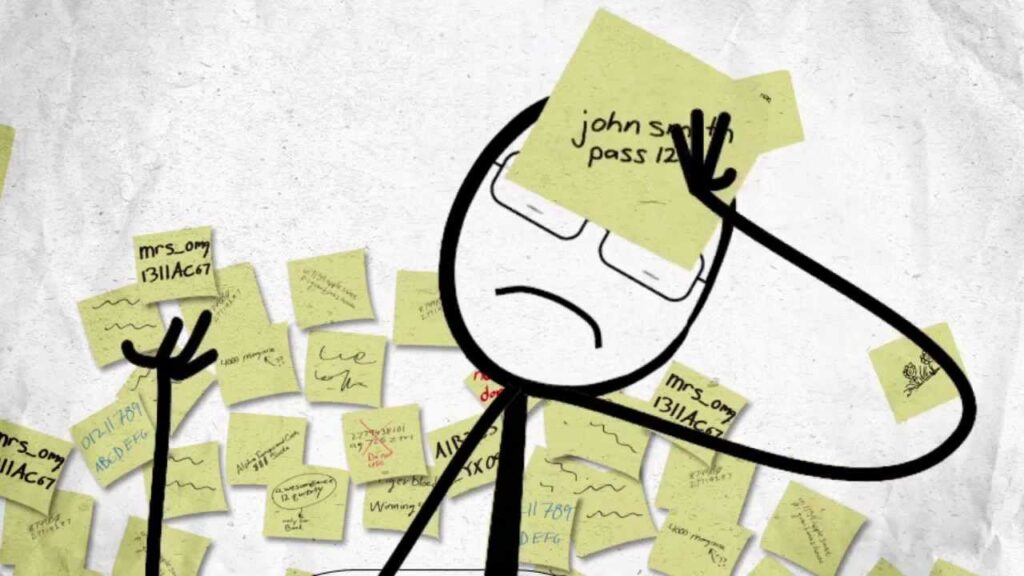The whole world is now going online accessing the information and services for their needs. Such a tremendous hike in the number of internet users gave advantages to businesses. At the same time, this number has raised several cybercrimes too.
Passwords are the secret word or phrase that gives access permission to the user. This makes the password the most vital information which needs security. You have to be extra careful while entering your password on the login web page.
It is the phrase or word that proves the user’s identity for authorizing the access. It becomes very important to keep this identity secure and private from other users or hackers. Intruders or cybercriminals use this identity to get access to your account. They may update your network settings or use it in illegal ways.
There are several attacking techniques hackers use to get this password. It is thus become difficult to maintain the security of the password. This is the complete guide you need to understand the safety and security of your login credentials. DO’s and don’ts will help you keep up with all the security measures.
How Does a Password Gets Hacked?
Cybercriminals used professional techniques to hack your account. They crack your credentials to get access permission of your account. There are some common methods used by the attacker you may need to keep in mind. Below are those shortlisted techniques used by the attackers.
1. Dictionary Attack
In this method, the attacker used a dictionary method that uses multiple words listed in the dictionary as a password. Dictionary attacks concentrate on the length of the password you enter by matching it with those in the dictionary.
This attack is the confused tactic that requires numerous attempts to succeed. There is an algorithm that uses the exponential power of your password length to match it with the dictionary word. This attack can be simply defined as a person attacking your account with a dictionary with him.
2. Phishing
It is the most common trick to attack your account credentials. Cybercriminals use social engineering for this phishing attack. The attacker will mail you false information and pressurize you to click on the given link. This mail may be about your credit card or your bank account.
Once you click on the link in the mail you land on the dummy website which is the copy of the original. When you enter your password here it will be known to the attackers.
There are also phishing scams that operate through false. You will hear recorded voice convincing you to be a true call. They may ask and collect vital information from you on the same call.
3. Brute Force Attack
A brute force attack is performed rigorously through an algorithm. This Brute force algorithm is designed to try all possible combinations of the words. This algorithm generates a huge number of guesses to be used with the username of the account.
4. Keylogging
This attack is often referred to as the keyboard capture too. Attacker capture all actions of the user secretly. The user is completely unaware of the fact of how the attacker is spying his actions.
Keylogger stores each keystroke pressed by the user in a small file. This small file saves all the key sequences which attacker can refer to crack the password. The file is automatically mailed to the attacker who is monitoring all your actions on the system.
5. Shoulder Surfing
This attack is performed by spying your actions over your shoulders. The shoulder surfing attack is typically used to get your ATM PIN and password as well.
When you enter your password in the presence of someone you know or the unknown person, you just have to hide your password carefully. It is a simple technique to spy the password by looking over the shoulder of the target user.
How to Create a Strong Password ?

As you know the importance of the password, it is necessary to keep it unique and unhackable. You have to follow some rules to create such a strong password and keep your account safe from the attackers.
You can apply these rules on the manually created password or you can also get the help of the password generating tool. Here are the most important rules to create a strong password.
- At Least Eight Characters Long
A short password has fewer characters and hence fewer combinations. It is thus advised to keep your password as long as possible. The minimum length of your password has to be eight characters. Some of the websites display an error message for a shorter password while signing up.
- Do the Mistakes
You do need to be grammatically correct with your password phrase. You can be silly to create a password by making some errors in the word spelling. It is recommended to scramble the characters in your password phrase. You can mix lowercase and uppercase alphabets with the numbers and symbols as well.
- Replace Some Characters
You can create the strongest password by mixing alphabets, symbols, and numbers. It will be more difficult to crack if you replace some of the characters in the password with special symbols. For example, @ for a, $ for S, 2 for Z, and so on.
- No Keywords
Keywords are easiest to recognize and crack. The accounts got hacked found to have general keywords as their passwords. It is thus recommended to use a unique and complex word or phrase for the password. Use unusual words to generate a complex and difficult to remember password.
- Should Not be Easy to Remember
Passwords are crucial and have to be the strongest. You may enter the password in the presence of outsiders knowingly or unknowingly. If the password is a usual word, it will be easy to remember. For example, a sequence of alphabets or numbers like 12345678 or abcdefgh. You have to ignore such an obvious combination for the password.
✅ Check How Secure is my Password?

Do you wonder how you can measure the strength of the password you generated? As the article repeats about generating the strongest password for maximum security, there has to be some meter that can prove this strength.
Cybercriminals use professional algorithms to find your password. In such a scenario, weak passwords are the easiest to crack. You can check your password strength with below software tools. Improvise your password with these easy to use tools.
- The Password Meter
- Estimated Password- Cracking Times
- How secure is my password?
- Kaspersky’s Secure Password Check
All the above-listed software tools are specially designed for assessing the password strength. These tools give you instant feedback about your password so that you can make necessary changes to finalize your password.
These software tools focus on the usual bad practices in the password generation. There are no perfect criteria for an ideal password as these password tools have their algorithm and formulas to judge the password.
These applications may not be the perfect software but they can brief guidelines of the strongest password creation. You can use these tools to improve your password to the most possible complex as well as a unique password.
?♂️ Tips to Remember Your Login Credentials

Login credentials are too important to get authorized access into your account which makes it important to secure this information. With lots of accounts on various platforms, it is very difficult to remember the credentials of all accounts. Here are some useful tips for creating and managing your password. You can also find out if your password gets stolen. Below are the essential methods that can make your account secure.
1. Get the Help of a Password Manager
As advised above strongest passwords are at least eight characters long making it too hard to remember. Your password may contain symbols and numbers to make it complex and unique. It is also essential to create a different password each time. The password manager comes to your rescue here.
You can use your password manager with trusted services like LastPass or 1Password. They provide services for desktop as well as mobile. You will get an account here which will have username and password.
With the password manager, you have to remember a single username and password which will unlock your saved login credentials for all platforms. This master password has to be strong to make it safe from hackers as these password managers are also software.
2. Note it Down
Yes, you read it right you can write down your password. It may oppose the recommendations given above to keep your password secured. Well, known security experts like Electronic Frontier Foundation stated that you can keep your credentials recorded on a physical sheet also.
You can write it down on traditional paper instead of any electronic medium. If an intruder gets access to your system he can find out your password stored anywhere on your system but not in your house.
There are chances if someone can break your house for a password that has the lowest possibility. It is recommended to maintain a sheet of paper on which you can write down your password. You can keep this sheet locked in your drawer or any other safe place. Try to be careful with preserving this sheet while traveling.
3. Keep Watching if the Password is Stolen
You are the one who created the password and you will be the one who can leak it. You have to restrict the number of people who know your password or the place you kept it. A malicious hack can also be responsible for your password leak.
In either case, you have to get a hint of the hack when your password gets compromised. Software like Google’s PassWord check-up and Firefox Monitor from Mozilla record your valid email id to notify any kind breach with your password or account. With such notification, you can take proper action by updating your password.
4. The 2FA [Two-Factor Authentication]
You can store your password at a secured place like software that has a two-factor authentication process. The two-factor authentication method includes a double security check-up that promises high confidentiality.
You can use the app locker to store your password which unlocks with a passcode and your figure print or OTP on your phone. The verification code sent on your device is a much safer method to protect your password. You can keep your browser or app registered with an authenticated device to track your account safely.
? How Often Should I Change My Password?
A complicated password is not the solution to maintain the security of your account. Several tools, too much complex rules, and endless researches are emerging as a threat to your network.
Update Password Each Month
According to the article by BBB (Better Business Bureau), it is advised to update your password with the intervals of 30 days. The article also guides the length of the password and using security questions on a random basis.
To maintain the security of your password you have to keep it noted at the private place which is further secured with the multifunction authentication method. They also recommended a password manager to keep your password confidential. This may not be the best advice for all as it is not convenient to change the password each month.
No Frequent Update
According to the professionals in the field of security, passwords must be changed with an interval of 30, 60, or 90 days. In the IT sector employees are forced to update their password frequently.
With such strict corporate terms and policies, it becomes too hectic for employees to remember passwords. Employees have to note down these updated passwords to make them memorable.
When the employee writes down the password it can be a bad practice with the respective safety of the customer. When they have to change the password each month, they end up with bad password behavior.
When it is Must Change Your Password❓
With the above-mentioned disadvantages of frequent password change, it doesn’t mean that you never have to change your password. There are some mandatory situations which demand the password change. Here are such situations listed below.
- Whenever any security incident happens in the enterprise, you have to change your password immediately.
- When your system gives you a hint of unauthorized access trying to break your account, you have to update your password with the complex one.
- In some situations, you may need to share your password with your colleague or teammate. You have to change your password when they are not using your login anymore.
- If you have accessed your account from a public system like the library or used your login credential to hotel Wi-Fi, it is time to change your password.
- When you don’t have multifactor authentication enabled in your system, you must change your password with a particular interval of days.
Password Security Tips: Dos & Don’ts
It is important but not easy to keep your password strong and safe. You have to take care of this crucial element of your login credentials. You have to follow some do and don’ts that can help you keep your password secured with you.
- Keep it Complex
An easy and obvious password like enterprise name, sequences, or your business keywords can be cracked which compromises your network. You have to create a complex password that is hard to guess and memorize.
- Create a Unique Combination
Combinations like 11111 or AAAA are the first preference of hackers. It makes it mandatory to ignore such easy passwords. You have to create a combination comprising lowercase and uppercase alphabets, numbers, and special symbols on your keyboard.
- Keep it Private
When you create your password privately, it is necessary to keep secure with you. You can note it down on a private place having two-way authentication.
- Use 2FA
You can improve the security of your account by using two-factor authentications. You can use your phone number or email id for this purpose. 2FA acts as a security guard for your information. Attackers may find out your password with the attacking methods but the second authentication will not be easy to access.
- Text Files
You should not take risk of saving your password on a text file. Text files are easy to decrypt and know the saved password.
- Default Passwords
Default passwords are known and hence responsible for most of the hacked accounts. It is always recommended to update this default password with the customized one. You have to replace this default password with a complex and unique combination of characters.
- Weak Password
As guided above, you have to update the default password with the strongest password. The password created with the easy to remember keywords, sequential numbers, and obvious phrases are considered to be a weak password.
- Saving Password on the Browser
Your browser may have autosave function which saves your login credential for future use. If the same system is used by a user other than you, your credentials will be compromised. You have to take care of this aspect too.
- Sharing
Never share your password with anyone is the thumb rule of keeping your password private and safe. You should not share your password by any means.
- Using a Stolen Password
When your password gets compromised, it is obvious that hacker has a record of it. While resetting your password never use such a stolen password. Hacker will try the stolen password as the first password making it easier to attack your account than before.
Conclusion
Here is the complete guide about the importance of your password and its security. You get thorough information about possible attacks on your account to get unauthorized access with the listed attacking methods.
This article gives essential rules to follow while generating a password. You get an idea about how to manage your password securely. Even with all the safety measures if by any chance your password gets compromised you can use 2FA as the second guard.
Listed situations help you find out when it is time to update your password. Do’s and Don’ts in this article has to be followed strictly.


